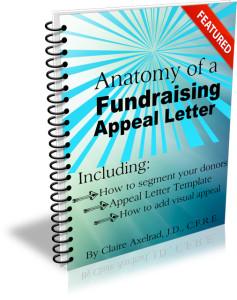 I’ve been writing since this pandemic began about the importance of staying connected to donors right now.
I’ve been writing since this pandemic began about the importance of staying connected to donors right now.
Especially right now.
Empathically connected.
Humanly connected.
Dependably connected.
Now is no time to go dark on folks.
Not when they most need social connection!
Please take heed and, when it comes to your donors, don’t be a stranger.
Social Distancing Does Not Justify Donor Distancing
There are many aspects of staying connected with donors during this pandemic, and I’ve covered a lot of them in past articles. [See here, here, here and here for just some ideas; I have more!] Holding virtual events. Making thank you calls. Calling supporters to check in. Offering participation opportunities like town halls, community conference calls, zoom focus groups, engagement surveys and so forth.
But there’s one area I haven’t covered, because I didn’t think I needed to. Apparently, I do. Why? Because social isolation is changing us in unforeseen ways. And it’s messing with our minds in a way that comes out in our verbal expression.
Because there is so much emphasis on staying separated from others, and taking care of ourselves, this ‘separation mindset’ is creeping inexorably into our psyches. What do I mean?
EXAMPLE: Last week I was asked to review a draft fundraising appeal letter. I was dismayed to find how far it had drifted from making a human connection. I don’t want to embarrass anyone, so I won’t print it here in its entirety, but suffice it to say the organization: donor ratio was an alarming 24: 2. The first paragraph looked like this:
“As we approach… We have been struck down by COVID, forcing us to…. The pandemic has dealt a terrible blow … forcing us to shift our focuses and … we have had to think hard about how our mission can continue to serve our community.”
You get the idea. What perplexed me is I’d reviewed letters from this fundraiser before, and never had they been so me/we/us/our focused. What was going on?!?!
It turns out Tim Morral at Marketing Profs found the answer: Social Distancing Is Changing the Way We Write. That’s a Problem. Something about being in social isolation is seeping into our brains.
“I am an executive editor at a B2B marketing agency, and over the past several weeks I’ve reviewed a ton of content—all of it written by editorial pros in quarantine—that creates distance between the writer and the reader.
It’s not intentional, but it’s happening.”
— Tim Morral
Remember this as a general rule:
- First person appears arrogant, self-centered and remote.
- Third person creates distance.
- Second person removes it.
If you don’t want to come across as a scary stranger to your readers, remember second person is the equivalent of Goldilock’s ‘just right.’
What to Do? Remember You is the Glue
 In other words, don’t focus on yourself. Don’t focus on a generic third person. Focus on the person to whom you’re writing.
In other words, don’t focus on yourself. Don’t focus on a generic third person. Focus on the person to whom you’re writing.
I thought by now everyone appreciated the truth of what I learned from fundraising copywriter extraordinaire, Tom Ahern:
“You is the glue. Every time you use it the reader pays slightly more attention…involuntarily. It’s the best cheap trick I know.”
Cross out all the ego-centric stuff in your copy and rewrite. “You” is one of the five most powerful words in the English language. To make philanthropy about your donor’s experience, not yours, use “you” rather than “I” or “our” or “we” (unless it’s “we, together”).
- You grabs your donor’s attention.
- You is personal.
- You helps to “tip” your donor towards seeing your request in a positive light.
- You makes the story you tell about your donor.
Cross out anything creating distance in your copy and rewrite. Unless you’re using ‘they’ or ‘them’ as a gender neutral pronoun to describe a specific identified individual about whom you’re sharing a compelling story, stay away from generic third person terms.
- No “one” is reminded.
- No “they” are asking me to reach out.
- No “it” will happen.
- No “someone” like you.
Show your donor how to be the very best version of themselves. Make fulfilling your organization’s mission about your donor’s actions. Make the values your organization enacts about your donor’s caring, generosity and good character. Use “you” to make your donor the hero. Instead of “We cure cancer” or “Our organization cures cancer” or “They cure cancer,” substitute “You” and “Your.”
- “You can do this.”
- “You did this.”
- “Your commitment will make this happen.”
- “You are magic… powerful… extraordinary… unselfish… honorable… wise… far-seeing…
Use Language to Remove Barriers, Not Build a Wall
 Of course you’re not trying to distance yourself from your supporters; yet distancing is becoming second nature to an extent.
Of course you’re not trying to distance yourself from your supporters; yet distancing is becoming second nature to an extent.
- I know you’d never intentionally try to create distance between you and your prospective donor.
- I know you understand a fundraising appeal is akin to an informal conversation, not a formal term paper.
- I know your goal is to strike a chord and deeply connect on an emotional level with the person to whom you’re writing.
Knowing these things, I caution you to be aware of how the times we’re in may be affecting your thinking and coming out through your language.
Besides becoming newly attuned to your own writing and speaking, pay extra attention to:
- Screening/editing communications prepared by others on your team, including staff, board and other front-facing volunteers. Whereas you might not ordinarily add comments to their writing, notice if they’re unintentionally creating distance. If so, feel free to share this article with them and gently point out what you’ve noticed.
- Making your brand voice and tone, and all your fundraising and communications strategies, more personal and human. This has always been a good idea; today it’s more important than ever. People give to people, not organizations. Whatever is getting in the way of your humanity, nix it. Check out some of the ways you may be erring on the side of inhumanity here.
- Becoming more intentional about using language to build relationships, not walls. Choose your words with care. Avoid acronyms and jargon that can be hard to understand and make readers feel like outsiders. Avoid words like “underserved,” “marginalized,” “disabled,” and many more labels that dehumanize people. Labels are judgements. If in doubt about a word, ‘google’ it and see how other people respond to that term.
When there are no strangers in the appeal, the donor sees no danger in accepting the offer.
When you use language that creates connections… flatters your reader… assumes your reader’s best qualities… allows your reader to rise to the occasion….you’ll be well on your way to creating an appeal donors won’t want to refuse.
Because, clearly, the letter comes from a friend.
Most important, it is all about them — and how amazing they are.
Want to Learn More about Writing a Compelling Fundraising Offer?
 Please check out Anatomy of a Fundraising Appeal Letter + sample template. This is a simple, yet incredibly thorough, 62-page step-by-step guide to crafting a killer appeal letter or email appeal. In this easy-to-follow guide you’ll learn the art of taking your appeal from run of the mill to… out of the ballpark. From anesthetizing to… astounding. From colorless to… captivating.
Please check out Anatomy of a Fundraising Appeal Letter + sample template. This is a simple, yet incredibly thorough, 62-page step-by-step guide to crafting a killer appeal letter or email appeal. In this easy-to-follow guide you’ll learn the art of taking your appeal from run of the mill to… out of the ballpark. From anesthetizing to… astounding. From colorless to… captivating.
As with all Clairification products if you’re unsatisfied for any reason I have a 30-day, no-questions-asked, 100% refund guarantee. You can’t go wrong.
Images: My photos of playground art, San Francisco






Great piece! I’m going to share it with the two non-profits with which I work and with my Church.